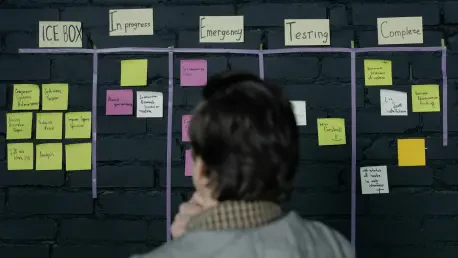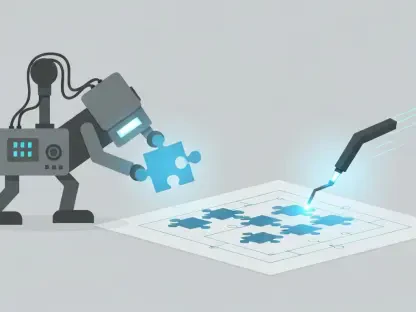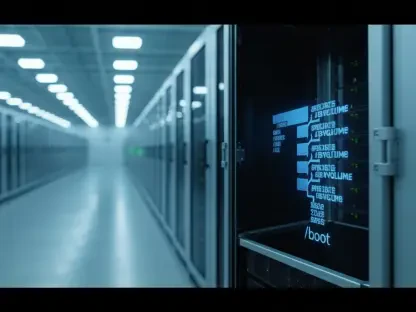In today’s fast-paced digital age, software development is undergoing a rapid transformation. With the staggering statistic that nearly a third of software projects fail to meet their intended goals, it is crucial to explore why traditional methods are often inadequate. In an environment where customer demands weave complex webs of expectations, tried-and-tested methodologies like the waterfall model are showing signs of inadequacy. This setting paves the way for innovative strategies that promise more timely and high-quality results.
Navigating the Shifts in Software Development
The shift from the stoic waterfall model to the dynamic realm of Agile methodologies has captured the attention of numerous industries. As priorities pivot toward digital transformation and resilience against cyber threats, old practices no longer seem sufficient. Agile stands at the forefront, offering a flexible, customer-centric approach that aligns with heightened consumer expectations for secure, efficient, and top-notch software. This transition fuels a broader trend as businesses adapt to evolving technological landscapes while prioritizing user satisfaction.
Decoding Agile and Shift-Left Processes
Agile is defined by its core principles of rapid iteration, collaborative client engagement, and adaptability to change. It encourages delivering small, consumable increments with consistent client feedback, ensuring that development is aligned with user needs. Meanwhile, shift-left practices call for embedding quality and security assessments early in the Software Development Life Cycle (SDLC). This proactive approach aims to identify and resolve issues before they manifest into greater challenges, exemplified by industry giants tackling complex projects with newfound success.
Industry Perspectives and Case Studies
Industry leaders have championed the remarkable outcomes achieved through Agile and shift-left methodologies. Insights and case studies, such as those from IBM and Microsoft, vividly depict how embracing these frameworks has redefined their software delivery processes. IBM leverages automation and standardized containerization to streamline transitions, demonstrating the vast potential of early testing. On the other hand, Microsoft’s integrated engineering system illustrates shift-left’s ability to harmonize team communication and coding standards effectively. A comprehensive economic study by the National Institute of Standards and Technology (NIST) further corroborates the advantages of preemptive error detection, underscoring the cost-effectiveness of this revolutionary practice.
Practical Steps for Integration
Bringing Agile and shift-left into an existing workflow may seem daunting, yet practical strategies can simplify the process. Implementing a clear framework that integrates these methodologies while embracing suitable automation tools can lead to substantial improvements in software quality. Tools for automating testing and ensuring comprehensive security protocols play a crucial role. Companies must echo the importance of adjustments in organizational culture, cultivating an environment receptive to change and synchronized with these innovative approaches.
Reflecting on the Path Forward
Agile and shift-left practices have permanently altered the landscape of software development, championing a philosophy of early problem identification and mitigation. The progress achieved so far has paved the way for future innovations that aim to harness automation and artificial intelligence even further. Companies venturing into these territories should anticipate changes in team dynamics and roles as automated solutions continue to capture broader aspects of development. Emphasizing an integrated approach will remain essential, ensuring that all team members align their efforts toward enhanced productivity and quality output. As industries continue to evolve, embracing such transformative strategies could hold the key to a successful digital future.









